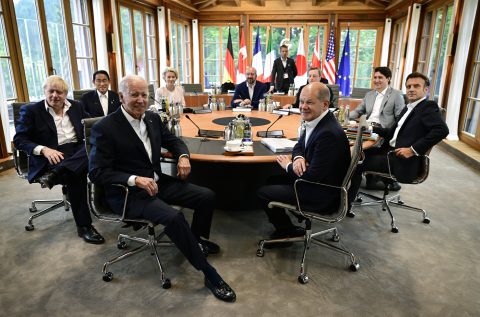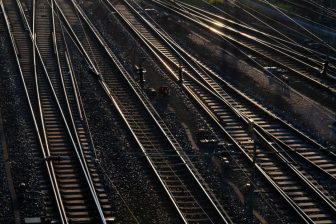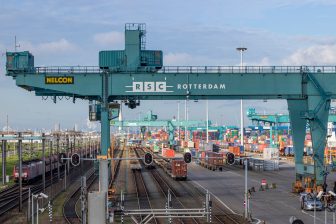
G7 and EU plan a new BRI in the making?
Clockwise from left, British Prime Minister Boris Johnson, Japanese Prime Minister Fumio Kishida, the President of the European Commission Ursula von der Leyen, European Council President Charles Michel, Italian Prime Minister Mario Draghi, Canadian Prime Minister Justin Trudeau, French President Emmanuel Macron, German Chancellor Olaf Scholz and U.S. President Joe Biden attend a working session during of the G7 leaders summit at Castle Elmau in Kruen, near Garmisch-Partenkirchen, Germany, on Tuesday, June 28, 2022. The Group of Seven leading economic powers are meeting in Germany for their annual gathering Sunday through Tuesday. (John MacDougall/Pool Photo via AP)
The G7, the big leaders of the world, and the EU have pledged to raise 600 billion US dollars (634.56 billion euros) over five years to finance needed infrastructure in developing countries. In the west, it is considered a counter act of the Belt and Road initiative (BRI) of China. China itself says to welcome additional funds.
Do you want to read the full article?
Thank you for visiting RailFreight.com. Become a member of RailFreight Premium and get full access to all our premium content.
Are you already a member?
Having problems logging in? Call +31(0)10 280 1000 or send an email to customerdesk@promedia.nl.






Success stories of regions, in Europe, etc. have been based upon nearness, to a port – and vice versa.
(In absence of by water, then railways have been and is the large scale device, for nearness to a port.
“Return for everyone” calls for a meeting with demand, with Market.)
In EU utilisation of existing, upgrading of existing tracks, to 32,5 ton axial load, quickly adds 50% extra capacity – and handsomely pays, etc.
At continents as Africa, Market is different, etc., etc.